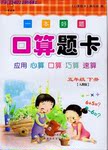题目内容
Most people know that Marie Curie was the first woman to win the Noble Prize, and the first person to win it twice. However, few people know that she was also the mother of a Noble Prize winner.
Born in September, 1897, Irene Curie was the first of the Curie’s two daughters. Along with nine other children whose parents were also famous scholars, Irene studied in their own school, and her mother was one of the teachers. She finished her high school education at the College of Sevigne in Paris.
Irene entered the University of Paris in 1914 to prepare for a degree in mathematics and physics. When World War I began, Irene went to help her mother, who was using X-ray facilities to help save the lives of wounded soldiers. Irene continue the work by developing X-ray facilities in military hospitals in France and Belgium. Her services were recognized in the form of a Military’s Medal by the French government.
In 1918, Irene became her mother’s assistant at the Curie Institue. In December 1924, Frederic Joliot joined the Institute, and Irene taught him the techniques required for his work. They soon fell in love and were married in 1926. their daughter Helene was born in 1927 and their son Pierre five years later.
Like her mother, Irene combined family and career. Like her mother, Irene was awarded a Nobel Prize, along with her husband, in 1935. Unfortunately, also like her mother, she developed leukemia because of her work with radioactivity(辐射能). Irene Joliot-Curie died from leukemia on March 17, 1956.
1.where did Marie Curie and some other scholars teach their children?
(within 4 words)
_________________________________________________________________
2.Why was Irene Curie awarded a Military Medal? (within 7 words)
_________________________________________________________________
3.Where did Irene Curie meet her husband Frederic Joliot? (within 4 words)
_________________________________________________________________
4.When was the second child of Irene Curie and Frederic Joliot born?
(within 2 words)
_________________________________________________________________
5.What can the underlined word “leukemia” possibly be in the last paragraph? (within 2 words)
_________________________________________________________________
1.In their own school.
2.Because she contributed to saving the wounded.
3.At the Curie Institute.
4.In 1932.
5.A disease.
【解析】
试题分析:本文讲述居里夫人的一生及其贡献。
1. with nine other children whose parents were also famous scholars, Irene studied in their own school可知居里夫人和其他学着是在他们自己的学校教孩子,故答案为In their own school.
2. went to help her mother, who was using X-ray facilities to help save the lives of wounded soldiers. Irene continue the work by developing X-ray facilities in military hospitals in France and Belgium. Her services were recognized in the form of a Military’s Medal by the French government.居里帮助母亲用X射线救助伤员,后居里夫人发展了该设施,并获得军队奖章,可知她获奖是因为对救治伤员做出贡献,故答案为Because she contributed to saving the wounded.
3. December 1924, Frederic Joliot joined the Institute, and Irene taught him the techniques required for his work可知两人是在居里研究所相遇,故答案为At the Curie Institute.
4. daughter Helene was born in 1927 and their son Pierre five years later.小儿子五年后出生,可知是1932年,故答案是In 1932.
5. developed leukemia because of her work with radioactivity(辐射能)辐射能应该是会导致疾病,故答案是A disease.
考点:考查名人事件阅读

 一本好题口算题卡系列答案
一本好题口算题卡系列答案